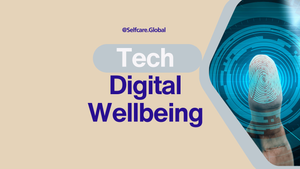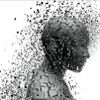The Paradox in Your Pocket
I want you to try something with me. Take a quick glance at your phone (if it isn't already in your hand). That sleek device represents both our greatest modern miracle and our most challenging daily dilemma.
Last week, I watched as a mother and her teenage daughter sat across from each other at a café for over an hour, both completely absorbed in their screens, exchanging perhaps three sentences the entire time. In the same café, at another table, an older couple used a tablet to video call their grandchildren overseas, their faces lit with joy as they connected across continents.
Same technology. Dramatically different outcomes.
This is the paradox we navigate daily. Technology isn't inherently good or bad – it's a reflection of our intentions, boundaries, and awareness. When I observe the digital landscape today, I see both unprecedented opportunity and alarming disconnection.
Which begs the question: Is your technology serving as medicine... or creating new symptoms?
The 3 Major Challenges We're Here to Solve Together
- Digital Passivity vs. Digital Agency: Most people drift through their digital lives on autopilot, responding to notifications and algorithms designed to capture attention rather than consciously choosing how technology serves their wellbeing.
- The Victim vs. Hero Narrative: Many feel helpless against the pull of digital distraction, blaming "addictive design" rather than recognizing their power to shape technology's role in their lives.
- Digital Depletion vs. Digital Nourishment: Technology often depletes our mental resources, leaving us empty rather than filling our cups so we can serve from overflow.
I've spent a decade researching and implementing technology wellness practices with thousands of clients across the globe. What I've discovered is that transforming your digital life doesn't require rejecting technology – it requires reclaiming your relationship with it.
Would you be open to exploring a different approach? One where technology becomes a powerful ally in your wellbeing journey rather than an obstacle?
Our SelfCare community includes people just like you who are navigating this digital terrain together, sharing wisdom and practical strategies. I'd love for you to join us when you're ready.
The SelfCare Framework: Learn-Do-Embody-Teach
1. LEARN: Understanding Digital Impact
Your brain wasn't designed for the digital world we've created. Every notification triggers a dopamine response, creating neurological patterns that can either enhance or erode your wellbeing.
As neuroscientist Dr. Susan Greenfield notes, "Technology shapes our neural pathways" in ways that fundamentally alter how we think, process information, and connect with others.
The key insight? Your digital habits are literally rewiring your brain – but you get to decide the blueprint.
2. DO: Practical Digital Wellness
Knowledge without action remains theoretical. The philosophy of Kaizen – improving by 1% each day – transforms any area of life, including your digital wellbeing.
Small, consistent shifts in how you engage with technology create compound effects that dramatically enhance your overall health. Simple practices like a 30-minute phone-free morning routine can recalibrate your entire nervous system for the day ahead.
3. EMBODY: Becoming the Master, Not the Servant
We become what we consistently practice. True digital wellness happens when healthy technology habits shift from conscious effort to unconscious embodiment.
This isn't about perfection – it's about alignment. When your digital life naturally supports rather than undermines your wellbeing, you've moved from doing digital wellness to embodying it.
4. TEACH: Creating Ripples of Digital Wellbeing
The most powerful way to transform digital culture is to model healthy technology use in your home, workplace, and community. As you embody digital wellness, you naturally create permission for others to do the same.
Your children, colleagues, and friends are watching how you relate to technology. Your example creates ripple effects far beyond your personal experience.
Three Simple Steps to Transform Your Digital Life Today
May I share three practices that have helped thousands reclaim their digital wellbeing? These aren't about restriction – they're about intentional engagement that enhances rather than diminishes your life:
1. The Morning Sanctuary Practice
Reserve the first 30 minutes of your day as a technology-free zone. Instead of reaching for your phone upon waking, use this time to set intentions, move your body, or connect with loved ones. This single practice can reshape your entire relationship with technology by placing you in the driver's seat from the moment you wake.
What might change if you began each day by tuning into your own wisdom rather than the digital voices that so often drown it out?
2. The Conscious Consumption Filter
Before engaging with any digital content, pause and ask: "Is this information, entertainment, or distraction?" This simple awareness practice helps you discern what truly deserves your precious attention.
Content that informs or meaningfully entertains serves as medicine. Content that merely distracts often becomes a subtle toxin that fragments your focus and depletes your mental energy.
3. The Digital Sunset Ritual
Create a technology boundary at least 60 minutes before sleep. This isn't just about blue light exposure (though that matters) – it's about giving your mind space to process, integrate, and prepare for restorative rest.
Replace screen time with connection time, reflection, or reading. Many in our community report this single practice has transformed not just their sleep quality but their entire relationship with technology.
Would any of these practices resonate with your current life situation? Remember, transformation happens through small, consistent actions – not dramatic overnight changes.
The Connection Between Digital Wellness and Whole-Life Wellbeing
Your technology use doesn't exist in isolation from other aspects of health. Research shows direct connections between:
- Digital habits and sleep quality
- Screen time and movement patterns
- Social media use and mental wellbeing
- Information consumption and cognitive function
When you transform your relationship with technology, you create positive ripple effects across your entire health landscape.
The SelfCare Book "Lifestyle Medicine For the People" explores how technology medicine integrates with eleven other essential medicines to create a complete wellbeing ecosystem. If you're curious about this integrated approach, I'd love to share more of this journey with you.
Your Next Step: From Digital Drift to Digital Mastery
What if today marked the beginning of a new relationship with technology – one where you are firmly in the driver's seat, consciously choosing how digital tools enhance rather than diminish your life?
The journey begins with a single step. Perhaps it's implementing one of the practices we've explored. Or maybe it's simply bringing greater awareness to how technology currently affects your wellbeing.
Remember: technology is neither villain nor savior. It's a reflection of our intentions, boundaries, and consciousness. The power to transform your digital experience lies not in the latest app or device, but in your mindful engagement with them.
I'd love to hear which aspect of digital wellness resonates most deeply with you right now. What small step might you take today to transform technology from potential toxin to powerful medicine?
If you're ready to explore this journey further, our SelfCare community welcomes you with open arms and practical wisdom. And if you'd like a comprehensive framework for integrating technology medicine with eleven other essential medicines, the SelfCare Book provides a roadmap for this transformative journey.
Key Research References:
- Greenfield, S. (2015). Mind Change: How Digital Technologies Are Leaving Their Mark on Our Brains. Random House.
- Price, C. (2018). How to Break Up With Your Phone. Ten Speed Press.
- Newport, C. (2019). Digital Minimalism: Choosing a Focused Life in a Noisy World. Portfolio.
- Siegel, D. J. (2020). The Developing Mind: How Relationships and the Brain Interact to Shape Who We Are. Guilford Press.
REFERENCES
This is directly referenced from the Amazon best-selling SelfCare Book "Lifestyle Medicine For the People" by Rory Callaghan. If you would like to read more content like this, grab the free online chapters of the book or a hard copy.
We have done our best to reference everyone's expert opinions, peer-reviewed science, and original thoughts, all references available here and referenced in the text.
We also understand that most thoughts are not our own and there is a collective unconsciousness, unconsciousness, and universal mind stream of energy that is always at work. How our references are sorted and filtered is here.
This article is for informational purposes only and should not replace professional medical advice. Always consult with your healthcare provider before beginning any new health regimen.




